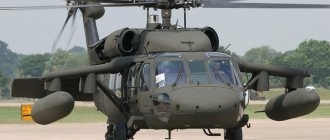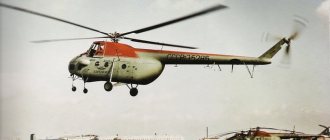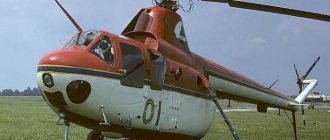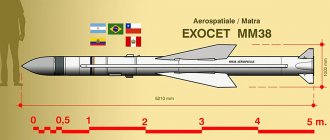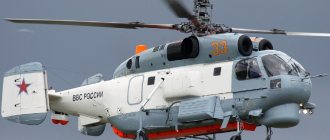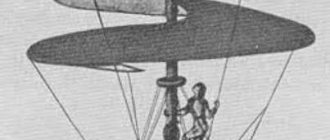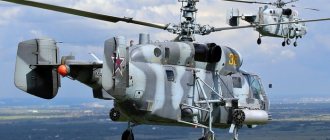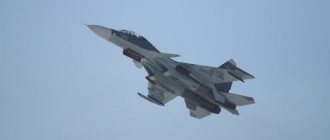Military users
that the army: 267
French armed forces: 394
|
British Army: 17
|
History, design, armament and combat service of Navy ships
The Alouette III helicopter is a development of its predecessor, the Alouette II. Unlike the previous model, the fuselage and tail boom of the new helicopter received a solid skin, and the cabin was large in size, so that in the transport-landing version it could accommodate 6 - 8 paratroopers with weapons. It was possible to transport cargo weighing up to 750 kg on an external sling.
The prototype of the machine, originally coded SE-3160, made its first flight on February 28, 1959, and the first production SA.316A helicopter took off in July 1960.
The next model SA.316B had reinforced main and tail rotor transmissions and a slightly larger mass, but could carry more payload. The first flight of the SA.316B took place on June 27, 1968.
The Alouette III prototypes and the first two series were equipped with Turbomeca Artouste 1MB turboshaft engines producing 570 hp, while the SA316C model received an Artouste IU engine.
The armament of helicopters of the SA.316A and SA.316B modifications could consist of a 7.62 mm machine gun or a 20 mm cannon and unguided missile launchers.
Experiments with a more thermally efficient and more economical Astazou turboshaft engine (870 hp) led to the appearance of the SA.319B Alouette Ml Astazou model, developed on the basis of the SA.316B. The first sample of the SA.319B model was tested in 1967, and its mass production began in 1970.
The SA.319B was an anti-submarine variant of the SA.316B helicopter and could be armed with both anti-ship missiles and anti-submarine torpedoes. The helicopter was equipped with an OMERA ORB-31 surveillance radar. When using the helicopter in search and rescue operations, it was equipped with a winch with a lifting capacity of 250 kg and a set of rescue equipment.
The French Navy ordered 37 helicopters of the SA-316B, SA-316B VSV and SA-319B modifications. In the 1970s, Alouette IIIs were used in the anti-submarine role until they were replaced by the Lynx WG-13.
During serial production, 1,453 Alouette III helicopters of various modifications were built. The cruiser-helicopter carrier Jeanne d'Arc SA-316B Alouette III was based in the period from 1664 to 2002.
Alouette III helicopter design
The helicopter is built according to a single-rotor design with a tail rotor, one gas turbine engine and a three-legged landing gear. The fuselage is all-metal, semi-monocoque type. In the bow there is a cabin with four doors, which accommodates two pilots and six passengers (in the landing version - eight paratroopers with weapons, in the ambulance version - two wounded on stretchers and two on seats).
The landing gear is tricycle, with a self-orienting nose wheel. There is a safety tail support. In the marine version, the three-legged chassis is replaced by a float one.
The main rotor is three-bladed, with hinged blades. The blades are all metal. The tail rotor is three-bladed, with a safety guard. The engine is mounted on top of the fuselage, behind the main rotor shaft, and is not covered by a fairing. The transmission consists of an engine gearbox with a freewheel, a main gearbox, a tail rotor gearbox and connecting shafts. The fuel system includes a 560 liter fuel tank, fuel pump and filter. The control system is booster, duplicated.
Electronic equipment includes VHF and HF radios, a radio compass, an intercom, and radio navigation devices. Armament can consist of a 7.62 mm machine gun, or a 20 mm cannon, or four ATGM3.11.
The helicopter was designed according to the classic single-rotor design, with gas turbine engines (GTE) located above the cargo compartment. To reduce aerodynamic drag, the landing gear was made retractable, and great attention was also paid to optimizing the contours of the fuselage.
Initially, it was planned to equip the helicopter with two Turbomeca Bastan VII gas turbine engines with a power of 1300 hp each, but then they were abandoned in favor of Turmo III engines, which provided a maximum speed of 290 km/h.
The first prototype with 1300 hp Turmo Hi engines. took off on April 13, 1965. By the summer of 1965, a second prototype was manufactured. On six pre-production helicopters, compared to the experimental ones, the shape of the forward part of the fuselage was changed, and the cockpit glazing was installed at a greater angle. These vehicles received the index SA.330A. The first SA.330A took flight on March 2, 1966, and the sixth and final aircraft on July 30, 1968.
Flight characteristics of Aerospatiale SA.316B Alouette III Crew………………..1 Passengers……………………….. 7 Powerplant type/power Turbomeca Artouste ШВ/ 570hp Main rotor diameter, m… 11.02 Length with rotating propellers, m 10.03 Height, m……………………… 3.0 Take-off weight, kg…………….. 2200 Empty weight, kg…………… ….. 1143 Maximum speed, km/h 210 Cruising speed, km/h. 185 Dynamic ceiling, m………. 200 Flight range with maximum fuel reserve, km 540
In August 1968, the plant in Mari-nyan began serial production of helicopters called SA.330B Puma. The first production helicopter took off on September 13, 1968.
The French Ministry of Defense has ordered 54 SA.330 helicopters. Export modifications SA.330C, SA.330H received more powerful engines - Turmo IVB (1400 hp) and Turmo IVC (1575 hp), respectively.
The French Air Force command drew attention to the production of a helicopter with more powerful engines, which ordered 37 copies of the SA.330H under the designation SA.330Ba and at the same time began a similar modernization of its entire fleet of SA.330B helicopters.
During the production of Puma helicopters, Sud Aviation joined the SNiA association (Societe Nationale Industrie lie Aerospatiale - National Society of the Aerospace Industry), better known under the Aerospatiale brand, which led to a change in the indexing of helicopters from SA (Sud Aviation) to AS (Aerospatiale).
In 1974, Aerospatiale began work on a thorough modernization of the helicopter. The car, called Super Puma, was significantly different from its predecessor. It was decided to install an even more powerful engine on it - the Makila gas turbine engine from Turbomeca. The design of the helicopter was also significantly redesigned. In particular, for ease of maneuvering in limited areas, the front landing gear was made single-wheeled, which reduced the turning radius.
The main rotor is four-bladed, with blades made of composite material. Kevlar armor was provided for the crew members.
In addition to the four basic modifications, the design of a fifth version, the shipborne AS.332F, was also underway. The deck vehicle had the ability to fold the tail boom and main rotor blades, and had a system for forced landing on the ship. This helicopter could carry two AM.39 Exocet anti-ship missiles or anti-submarine torpedoes. The equipment included OMERA ORB-32 or Thomson-CSF Agrion all-round radar, drop-dropping sonobuoys and a towed magnetic anomaly detector.
Since 1990, the newly built military AS.332B received the index AS.532UC/AC and the name Cougar 1. The AS.532UC was an unarmed transport and landing helicopter, and the AS.532AC differs from it by machine guns in the doorways of the cargo compartment and pylons for the external suspension of blocks HAR containers with 20 mm cannons or machine guns.
In 1992, the name of the manufacturer of Super Puma changed again - the French Aerospatiale, united with the German company MVB, formed the Euorocopter consortium, and modifications of the helicopter instead of AS began to be called EC (EC-225 and EC-725).
On February 6, 1987, an extended modification of the Super Puma helicopter took off for the first time, called Super Puma 2 or later Cougar 2 (index AS.332L-2, which was changed to AS.532U-2 in 1992).
The development of this type was the modification AS.532A-2, the design of which began in 1994. With the same engines and airframe, the AS.532A-2 was equipped with more advanced equipment. On it, in particular, it became possible to install and integrate into a single system based on an on-board computer any navigation equipment that the Cougar is equipped with. At night, the helicopter crew was able to work with third-generation night vision goggles.
A further development of the Puma/Cougar family of helicopters was the EC-725 Cougar 2+ helicopter, the first flight of which took place on November 30, 2000. The helicopter has an increased combat load and range; it has the ability to install an in-flight refueling system. The EC-725 is equipped with a new five-blade main rotor and two Makila 1A4 gas turbine engines with a power of 2413 hp each. The equipment includes a new autopilot.
The Puma, Super Puma and Cougar helicopters were part of the aviation group of the cruiser-helicopter carrier Jeanne d'Arc from 1992 to 2002.
description
Alouette (French for skylark) II Sud-Est SE.3130 belongs to Turboméca Artouste II, Sud-Aviation SA-318C from one Astaz IV Consortium of Aérospatiale manufacturers produced Alouette II with flatbed landing gear, three-bladed main rotor and two-bladed tail rotor.
With the exception of a few stabilization struts, the cockpit, which is not spatially separated from the cockpit, is entirely glazed. The fuselage frame and tail boom are made of steel tubular frame construction and are not lined. The absence of cladding provides good visibility and easy access to the drive elements behind the pulpit. The Alouette was widely used and used in the military and civilian field for passenger transport and as an observer, but especially in flight training (here mainly due to the single engine design to perform Autorotation). In the past they have also been used to transport patients to Air Rescue, but at times due to limited space.
The Alouette II was the first helicopter model to be used by numerous German police helicopter squadrons, including for command and control. Federal Border Service
[1] (Today
the Federal Police
, until the end of 2007), the German
Armed Forces
(until the beginning of 2008), the Swiss companies Air Zermatt and Air Glaciers (especially the successor model Lama), the Swiss Air Force, the
Turkish Police
, the
French
as well as
the Belgian Armed Forces
and
the Argentine Air Force
.
The Alouette II is especially suitable for training young pilots, since indirect manual control avoids control errors and flights without automatic control, i.e. HOUR. with unstabilized control. The flight stabilization features found in modern twin-engine helicopters are missing from the Alouette II. This means that the pilot must handle the controls very carefully and consciously and thus gain a good understanding of how the car reacts to the operation of the controls.
Light multi-purpose helicopter SA.316 Alouette III (France)
The light multi-purpose helicopter SA.316 Alouette III from Aerospatiale is designed for rescue operations, communications, battlefield surveillance, evacuation of the wounded, fire support for ground troops, and combating enemy armored vehicles. The Alouette III is a version of the Alouette II with a larger cabin, upgraded equipment, a more powerful engine and improved performance. The prototype, designated SE.3160, followed the first series, known as SA.316A. first flew on February 28, 1959. In June 1960, the Alouette III, with seven passengers on board, demonstrated its extraordinary flight performance by landing and taking off from the summit of Mont Blanc in the Western Alps (altitude 4,807 m). Five months later, the same Alouette III, with a crew of two and 250 kg of payload, took off and landed at an altitude of 6004 m in the Himalayas - both of these achievements were then unprecedented for helicopters. The SA.316A was built for the French and export markets, and in June 1962 it became the subject of a license agreement with the Indian company HAL for production rights. The first Indian-built Alouette III flew on June 11, 1965. Experimental models included an all-weather version, which made its first flight on April 27, 1964.
The helicopter is made according to a single-rotor design with a tail rotor. The main and tail rotors are three-blade with hinged fastening of all-metal blades. The powerplant consists of a single Artouste IIIB turboshaft engine producing 870 hp, limited to 570 hp. The cabin accommodates two pilots and six passengers or two wounded on stretchers with two accompanying persons. The external sling can accommodate cargo weighing up to 750 kg. The landing gear is a non-retractable three-post with a nose wheel.
The armament may include one 7.62 mm machine gun with 1000 rounds of ammunition or a 20 mm automatic cannon with 480 rounds of ammunition, four AS.11 anti-tank guided missiles or units with 68 mm unguided aircraft missiles.
The subsequent model SA.316B had reinforced main and tail rotor transmissions and a slightly larger mass, but could carry more payload. The first flight took place on June 27, 1968. This model became the main production version, was first offered for sale in 1970 and immediately found success in the export market.
The Alouette III prototypes and the first two series were equipped with the Turbomeka Artust IIIB turboprop engine. and the mass-built model SA.316C had an Artust IIID engine. The Alouette III's cabin is more open than the Alouette II's and can accommodate up to 7 people. Another difference is that all passenger seats can be easily removed to accommodate cargo if necessary.
The helicopter's equipment allows it to transport cargo weighing up to 750 kg on an external sling or use it for rescue operations on water and in the air. The winch used had a lifting capacity of 175 kg. Alouette III could be used for the evacuation of casualties: two seats and two stretchers were placed behind the pilot.
Experiments with a more thermally efficient and more economical Astazu theater engine led to the appearance of the SA-319B Alouette III Astazu model. developed on the basis of the SA-316B. The first example of the SA-319B model was tested in 1967. Alouette III variants were more successful on the international market than their predecessors, and by 1984 no less than 1,453 vehicles had been sold to 92 countries. In addition to the licensed production of HAL in Bangalore, India (200 vehicles), similar contracts have been signed with Romania (for 130 vehicles) and Switzerland (for 60 vehicles).
The SA.316C modification is equipped with an Artouste IIID engine. In 1967, the SA.319B modification was created with a more economical Astazou XIV turboprop engine with a power of 870 hp, limited to 600 hp. A total of 1,455 helicopters of various modifications were built, of which 1,113 were exported to 71 countries. Licensed production of the helicopter was established in India (Chetak), Romania (IAR-317 Airfox) and Switzerland.
TACTICAL AND TECHNICAL CHARACTERISTICS Crew, persons. 1 Speed, km/h: maximum 210 cruising 185 Ceiling, m: static 2880 dynamic 3200 Ferry range, km 480 Weight, kg: maximum takeoff 2200 empty helicopter 1143 Helicopter dimensions, m: main rotor diameter 11.02 length with rotating propeller 10 .03 height 3.0 Engine: HP Turbomeca Artouste I MEZ. hp 870
Specifications
Three-sided view
| Parameter | data |
| crew | 1 |
| Passengers | 4 |
| length | 9.70 m |
| Main rotor diameter | 10.20 m |
| height | 2.75 m |
| Empty mass | 895 kg |
| Maximum | 1650 kg (SA 318C) |
| drive | 1 × Turboméca Artouste II A or II A2 gas turbine |
| power | 299 kW / 406 W / s |
| Maximum speed | 185 km/h |
| Range | 450 km (maximum 2 people) |
| Maximum | 4500 m |
| Initial climb speed | 4.2 m/s |

